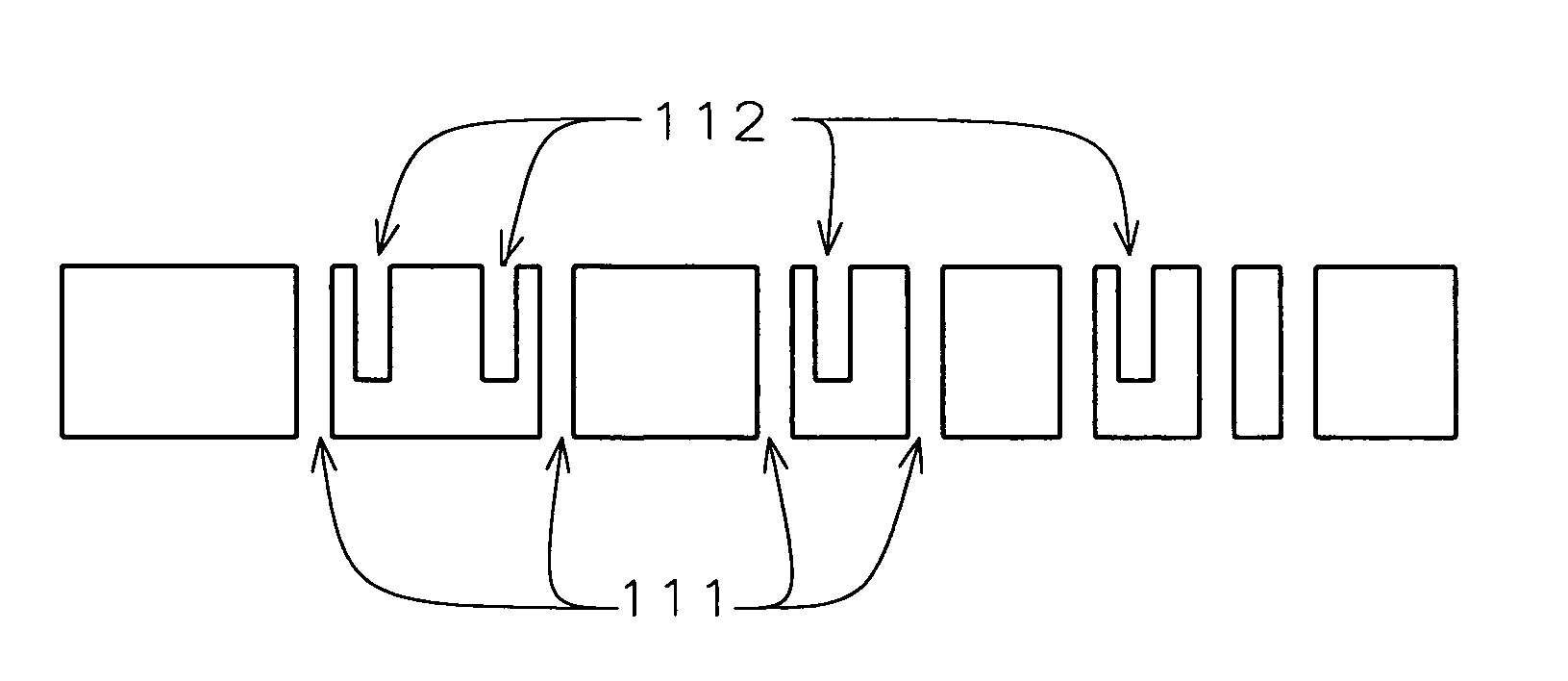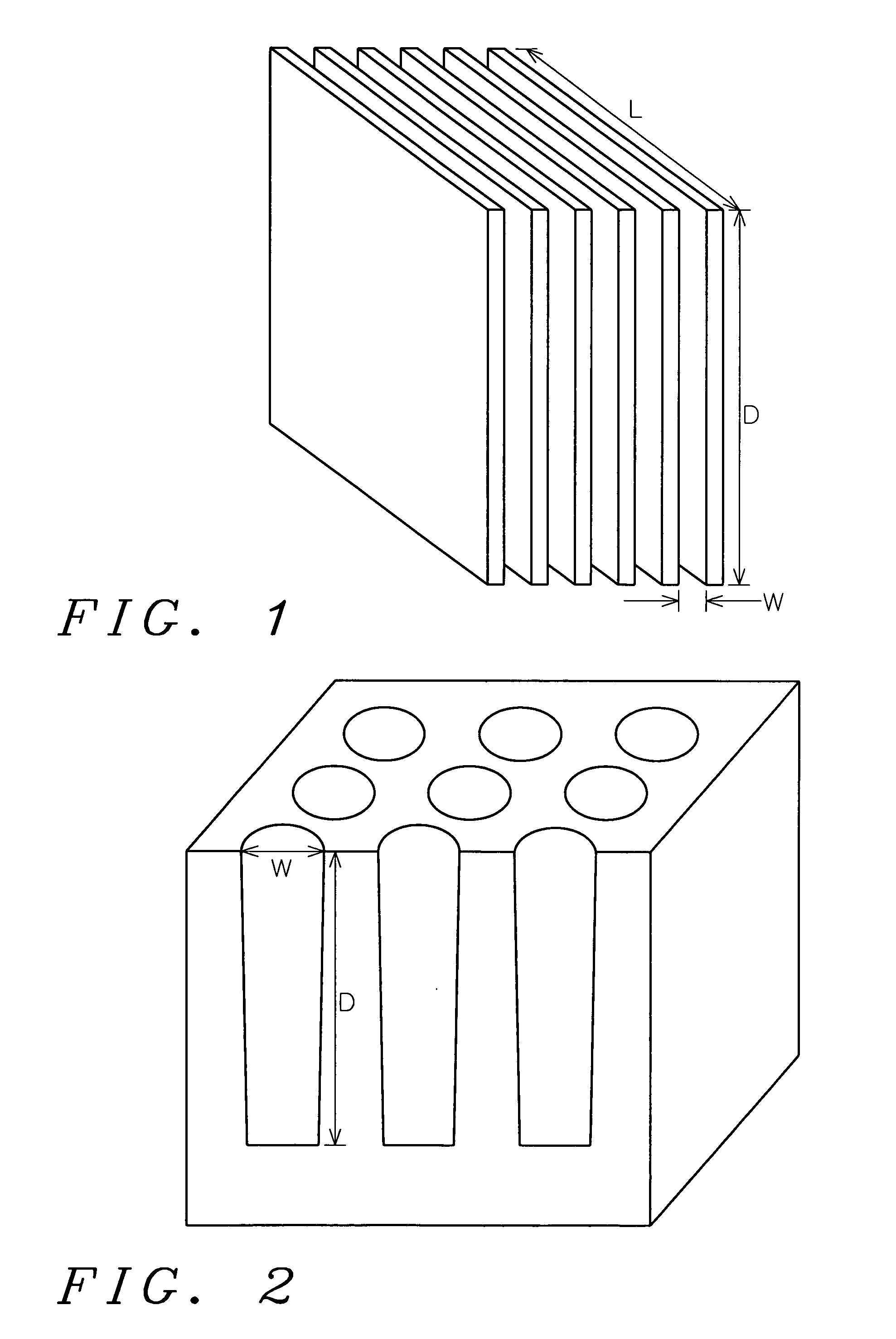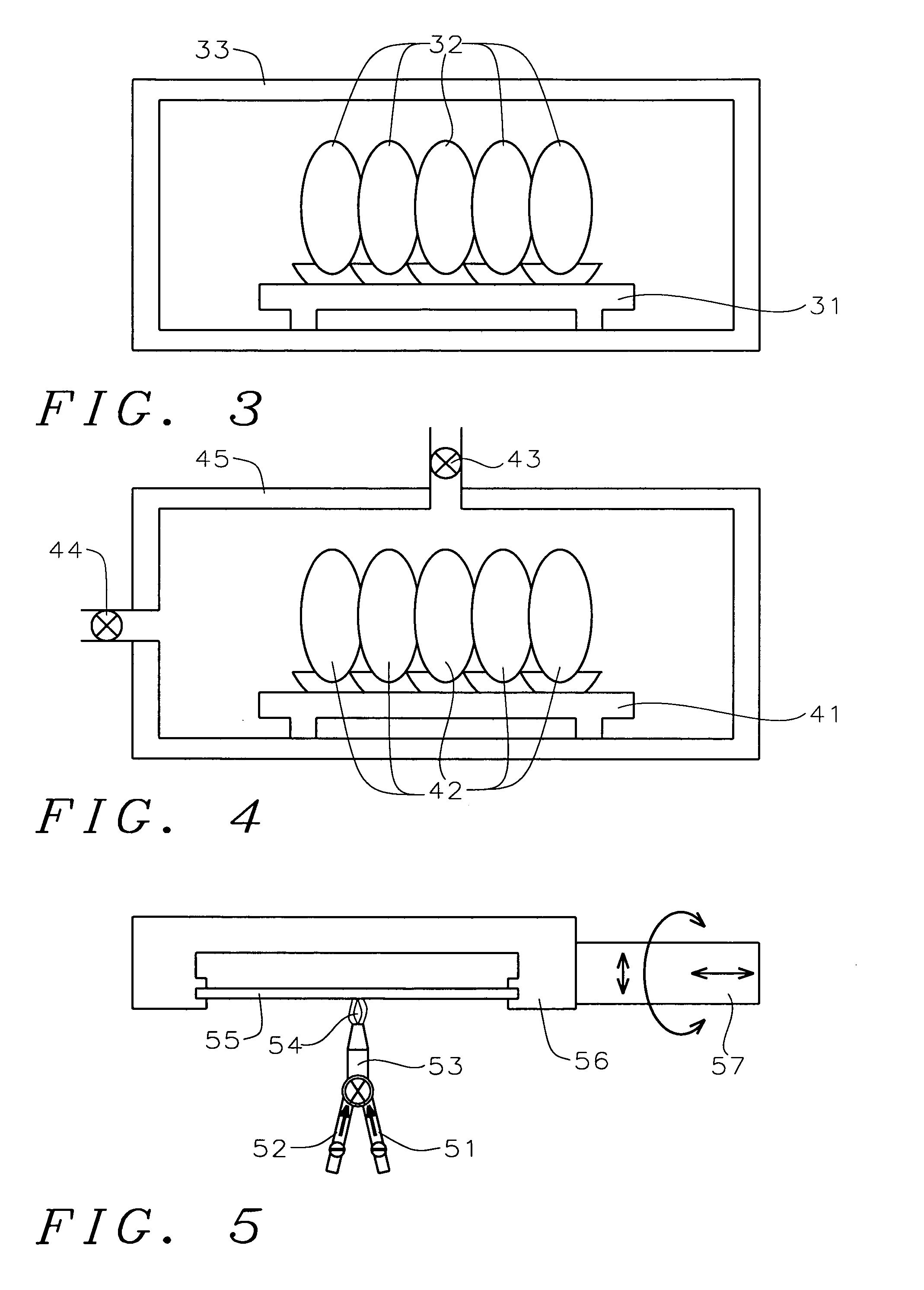Novel process method for post plasma etch treatment
- Summary
- Abstract
- Description
- Claims
- Application Information
AI Technical Summary
Benefits of technology
Problems solved by technology
Method used
Image
Examples
Embodiment Construction
[0028]The present invention proposes three novel post-etch treatment methods that can be used to remove the residual polymers after DRIE etching. The methods are called post-etch dry-cleaning processes as opposed to the wet-cleaning processes usually used after plasma etching. In the dry-cleaning processes of the invention, after plasma etching, the wafers are placed in an environment such as a hot oven, a laser beam or a fire flame where the temperature is high enough that the polymers will be burned and decomposed into small molecules, then evaporated and pumped away. If not, then the polymers may be shrunken into very small pieces which either fall out by themselves or are blown out of the structure, or their sizes become so small and stick to sidewalls permanently that they would not interfere with the performance of the devices.
[0029]The traditional post-etch treatment method to clean the residues after plasma etching is so-called wet-cleaning in which the etched wafers are imm...
PUM
 Login to View More
Login to View More Abstract
Description
Claims
Application Information
 Login to View More
Login to View More - R&D
- Intellectual Property
- Life Sciences
- Materials
- Tech Scout
- Unparalleled Data Quality
- Higher Quality Content
- 60% Fewer Hallucinations
Browse by: Latest US Patents, China's latest patents, Technical Efficacy Thesaurus, Application Domain, Technology Topic, Popular Technical Reports.
© 2025 PatSnap. All rights reserved.Legal|Privacy policy|Modern Slavery Act Transparency Statement|Sitemap|About US| Contact US: help@patsnap.com



